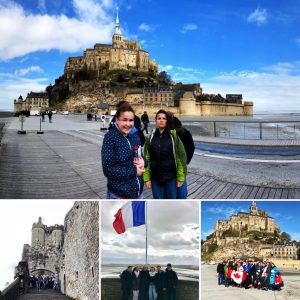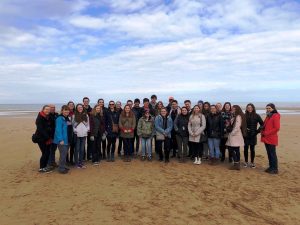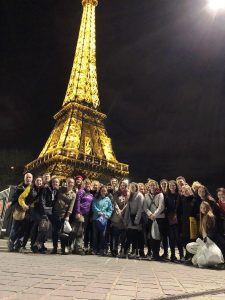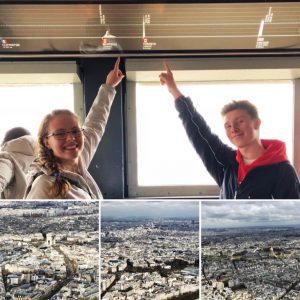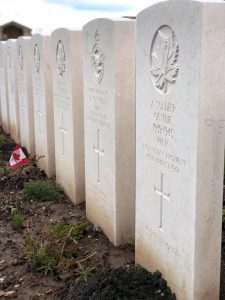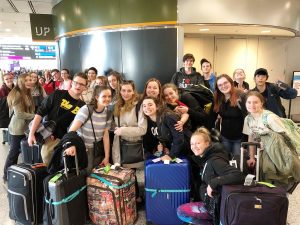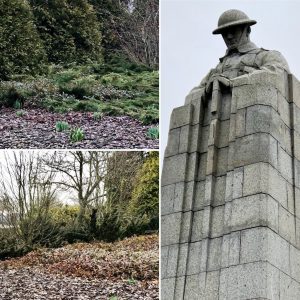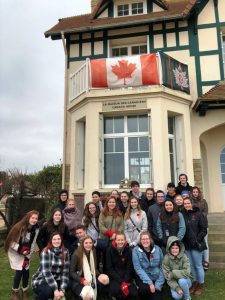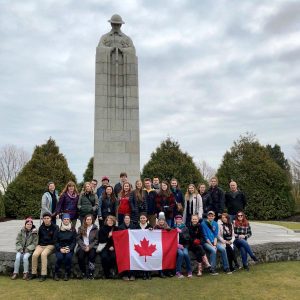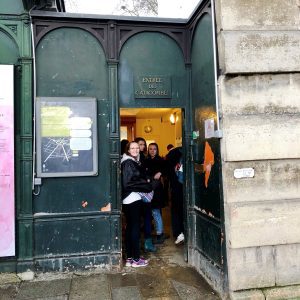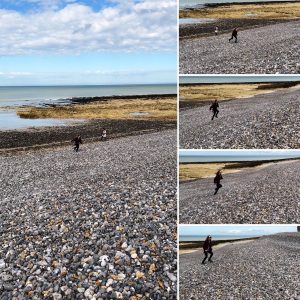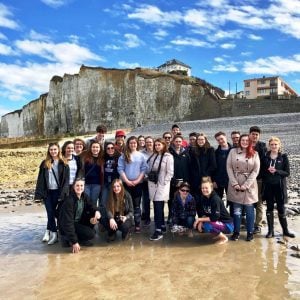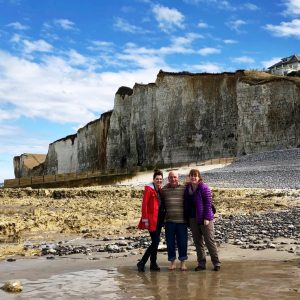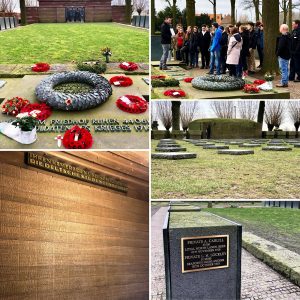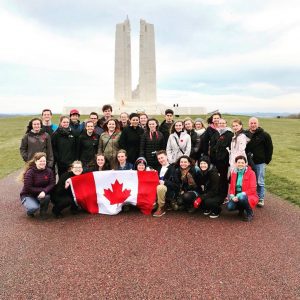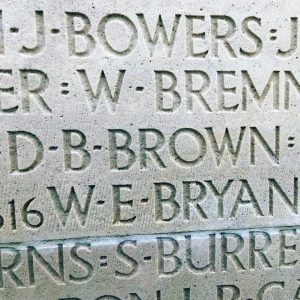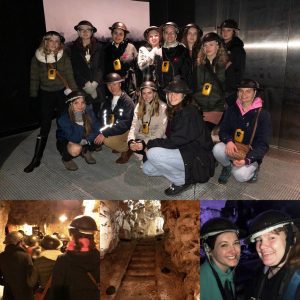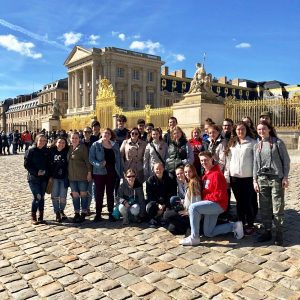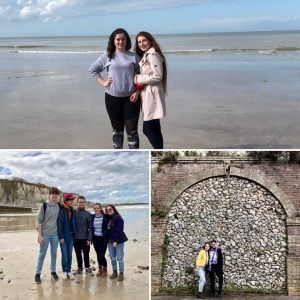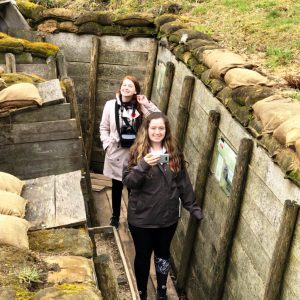CWDHS students and staff learn about Canada’s role in WWI and WWII during immersive European trip
March 29, 2018
FERGUS, Ontario – Over March Break, 25 students from Centre Wellington District High School and one student from Westside Secondary School travelled together to Belgium and France.
The group consisted of students from grades 10, 11, and 12 who had the mutual goal of gaining a better understanding of the Canadian experience during the First and Second World Wars. Students and staff also had the opportunity to experience French culture and language. Three teachers from Centre Wellington DHS accompanied the students on this adventure.
After a very long night of travelling, the group arrived in Brussels, Belgium and did a coach tour of the city, had lunch in the Grand-Place, and had a chocolate-making demonstration. After having their fill of chocolate samples, the group travelled to Ypres, where they would stay for the next two nights.
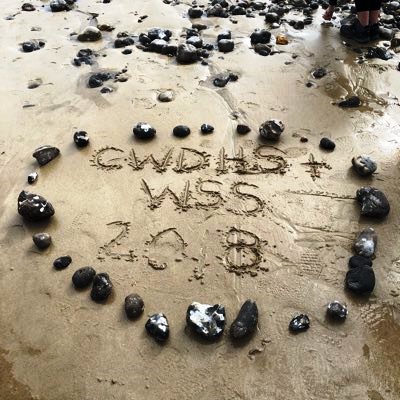
In Ypres, the group attended the Menin Gate Last Post Ceremony and took a short walk around the main square. They received a guided tour of significant World War I sites, including the Essex Farm Advanced Dressing Station and Cemetery where John McCrae wrote In Flanders Fields, the Langemark German Cemetery, the St. Julien Canadian Memorial, Tyne Cot Cemetery and the Passchendaele Canadian Memorial.
On the last evening in Ypres during the Menin Gate Last Post Ceremony, students Sarah, Jake and Katie laid a wreath on behalf of CWDHS and WSS.
After leaving Ypres, the group travelled to France and made their first stop the Canadian National Vimy Memorial. At Vimy, students Marisa and Jake shared the story of their three-times Great Uncle while standing in front of his name that is inscribed on the wall. Still at Vimy, the group visited the trenches and discovered how close the front lines were.
After leaving Vimy, the group stopped at the Notre-Dame de Lorette French Cemetery and the Ring of Remembrance. The Ring of Remembrance lists the names of all soldiers who died in the Nord-Pas-de-Calais region of France during World War I, regardless of the country they represented. According to CWDHS teacher Rebecca Grimes, “The 576,606 names from 40 nations are a sobering reminder of the human cost of war.”
In Arras, the group visited the Carrière Wellington (Wellington Quarry) in order to better understand a soldier’s experience in the tunnels prior to an attack.
Then the group made their way to Dieppe, France. In Dieppe, students and staff visited Blue Beach (Puys). This visit demonstrated the extremely difficult challenge that Canadians faced during the Dieppe Raid of August 19, 1942. Students and staff had trouble running up the steep, pebble beach on a peaceful sunny day and could not imagine what it was like during war times. CWDHS teacher Erica Parker shared the story of her great-uncle who was captured as a prisoner of war during the Raid.
Lunch in Dieppe offered the group the opportunity to practice French. Students and staff ordered lunch from a sandwich shop before walking along the seawall. The group stopped at the Essex Scottish Regiment Dieppe Memorial, and noticed an elderly woman listening in to the explanation. According to Grimes, this woman “told [the group] that she had been a 14-year-old girl that fateful August day. It was a powerful reminder for us of the civilian experience during the war. We paid our respects at the Dieppe Canadian Military Cemetery and then travelled on to Bayeux.”
The next day was an opportunity for students to focus on French history and culture as they travelled to Mont Saint-Michel and toured the island and the medieval abbey. Upon returning to Bayeux, the group saw the Bayeux Tapestry depicting the 1066 Normand invasion of England. For dinner, students had an opportunity to have a culinary adventure. Many students ate at traditional French restaurants where they tried escargots or cuisses de grenouille (frog legs).
Next, the group visited the Bény-sur-Mer Canadian War Cemetery where 2,044 Canadians who died in the D-Day invasion and the early stages of the Battle of Normandy are buried. Members of the Westlake Brothers Souvenir Association joined the group to share the story of the Westlake Brothers. Grimes said, “They sang the French national anthem, La Marseillaise, and we sang O Canada as part of our act of remembrance. We then visited Canada House, the first house liberated on D-Day, where Brigitte shared the stories of the house and the Hoffer family who have owned the house since before the war.”
The next stop was the Juno Beach Centre where students and staff visited the museum and then a Canadian student guide led them through the German bunkers and onto the beach. Students were able to take a moment to reflect on the sacrifices made by Canadian soldiers and then to collect some sand as a reminder.
The group continued on to Arromanches, site of the Mulberry Harbour. After viewing the Arromanches 360 film Normandy’s 100 Days, which tells the story of the D-Day invasion and the Battle of Normandy, they walked down to the beach and were able to walk out to one of the caissons that formed part of the D-Day temporary harbour. Before returning to Bayeux, they stopped at the Longues-sur-Mer German gun battery.
The group left Bayeux and made their way to Paris the following day. The first stop on the journey was the town of Versailles where a guided tour let them discover the wonders of the Palace of Versailles, including the Hall of Mirrors. Leaving Versailles behind, they finished the drive to Paris.
According to Grimes, “Our first sighting of the Eiffel Tower was a magical moment. A guided coach tour of Paris included driving around the no lanes and no rules Arc de Triomphe roundabout, a photo stop at Les Invalides, and sightings of the Opéra Garnier and Notre-Dame de Paris. After dinner, we made our first foray into the Paris metro system and walked up the Champs-Élysées.”
The next day, the group started the day by walking through the Bastille market, which was just down the street from their hotel. Grimes said, “We then visited the Louvre museum. Seeing the Mona Lisa was definitely the highlight for most students.” Off to the Eiffel Tower they went, where they took two elevators to get to the top level where the view was incredible. Students had time to explore the different levels of the tower and do some souvenir shopping. Some students walked down the 674 stairs from the second level to the ground level and some students faced their fears and stood on the glass floor of the first level. After a snack break sitting on the banks of the Seine, the group visited the Catacombs. Grimes said, “It is such a strange experience to walk through the Catacombs and see the thousands of human long bones neatly laid out to create walls decorated by human skulls.”
On the final day of the trip, the group did a food tour in Saint-Germain de Prés. Tastings included the Breton pastry kouign amann, baguettes, two types of cheese, and La Durée macarons. The group stopped at the Shakespeare and Company English bookstore. After everyone had stepped foot on the “Point Zéro” from which all distances to Paris are measured they went into the Notre-Dame de Paris Cathedral. Grimes said this was unique “as it was the second Friday of Lent, we were able to watch a part of the Veneration of the Crown of Thorns. The stained glass windows are awe-inspiring. A walk through the gardens allowed us to admire the flying buttresses of the Cathedral.”
The final activity of the trip was a cruise on the Seine River, Grimes said, “Seeing the illuminated sites of Paris and ending [the trip] with the sparkling light show on the Eiffel Tower,” was a great experience.
The group came back exhausted but with memories that will last them a lifetime.
Categories: Spotlight On Schools

